Preface
About Developer’s Kit for Texas Instruments DSP
Related Products
Using This Guide
Expected Background
If You Are a New User
If You Are an Experienced User
Organization of the Document
Configuration Information
Typographical Conventions
About Developer’s Kit for TI DSP
Introduction
Suitable Applications
Included Files and Drivers
Getting Started
Platform Requirements — Hardware and Operating System
MathWorks Software Requirements
For up-to-date information about the software from The MathWorks you need to use the Develop’s Ki...
Texas Instruments Software Requirements
Using Command Line Help
Help for Developer’s Kit for Texas Instruments DSP
Command Line Help for Nonoverloaded Functions
Command Line Help for Overloaded Functions
Command Line Help for Overloaded Functions for Links
Listing the Functions for Links
Using Your Target for C6701 EVM Software
Targeting the C6701 EVM
Target for C6701 EVM and the TI Tools
Configuring Target for C6701 EVM Software
Texas Instruments Software
Configuring the C6701 EVM
Confirming Your C6701 EVM Installation
Confirming Operation of Developer’s Kit
To Confirm the Operation of Your C6701 EVM
Error Message While Building c6701evmtest
Verifying That c6701evmtest is Running
Starting and Stopping c6701evmtest.mdl on the C6701 EVM
Creating Your Simulink Model
Using the C6701EVM Library Blocks
Configuring the C6701EVM ADC Block
Choosing the Sample Rate
Choosing the Codec Data Format
Selecting the Data Type
Selecting the Scaling
Configuring the C6701EVM DAC Block
Choosing the Codec Data Format
Selecting the Scaling
Selecting the Overflow Mode
Configuring the C6701EVM LED Block
Select the Target LED
Using the Overrun Indicator
Building the Real-Time Model
Creating the DSP Application Model for Targeting
Setting RTW Build Options for C6701 EVM
Real-Time Workshop Options for C6701 EVM
Target Configuration Options
Target Language Compiler Debugging Options
General Code Generation Category Options
C6701 EVM Compiler Options
TI C6701 Linker Options
C6701 EVM Runtime Options
Targeting Code Composer Studio
Tutorial 2-1 — A Frame-Based Single Rate Application
Building the Audio Reverberation Model
Adding Target for C6701 EVM Blocks to the Model
Configuring the Developer’s Kit Blocks
Configuring Simulation Parameters for Your Model
Setting Simulink Simulation Parameters
Setting Real-Time Workshop Target Build Options
Building and Executing Your Model on the C6701 EVM
Testing Your Audio Reverb Model
Running Your Model on the C6701 EVM
Starting and Stopping DSP Applications on the C6701 EVM
Tutorial 2-2 — A Multirate DSP Application
Working and Build Directories
Setting Program Parameters
Selecting the Target Configuration
Building and Running the Program
Contents of the Build Directory
Using Links
Constructing Link Objects
Example — Constructor for Links
Properties and Property Values
Setting and Retrieving Property Values
Setting Property Values Directly at Construction
Example — Setting Link Property Values at Construction
Setting Property Values With set
Example — Setting Link Property Values Using set
Retrieving Properties With get
Example — Retrieving Link Property Values Using get
Direct Property Referencing to Set and Get Values
Example — Direct Property Referencing in Links
Overloaded Functions for Links
Link Properties
Quick Reference to Link Properties
Details About the Link Properties
app
apiversion
boardnum
ccsappexe
dspboard
dspboards
dsptask
dsptasks
dspuser
numchannels
page
procnum
procType
rtdx
rtdxchannel
timeout
version
Tutorial 3-1 — Using Links for CCS IDE
Introducing the Tutorial for Using CCS IDE
Running the Interactive Tutorial
Selecting Your Target
Creating and Querying Links for CCS IDE
Loading Files into CCS
Working with the Target in MATLAB and CCS IDE
Closing the Links or Cleaning Up CCS IDE
Tutorial 3-2 — Using Links for RTDX
Introducing the Tutorial for Using RTDX
Creating the Links
Configuring Communications Channels
Running the Application
Closing the Links or Cleaning Up
Block Reference
Using the Developer’s Kit Block Reference
Contents of Block Reference Pages
Developer’s Kit Blocks Listed Alphabetically
Link Functions Reference
Using the Link Function Reference
Contents of Function Reference Pages
Tables of Link Software Functions
Link Functions Listed Alphabetically
Index
Numerics���
A���
B���
C���
D���
E���
F���
G���
H���
I���
L���
N���
O���
P���
R���
S���
T���
U���
V���
W���
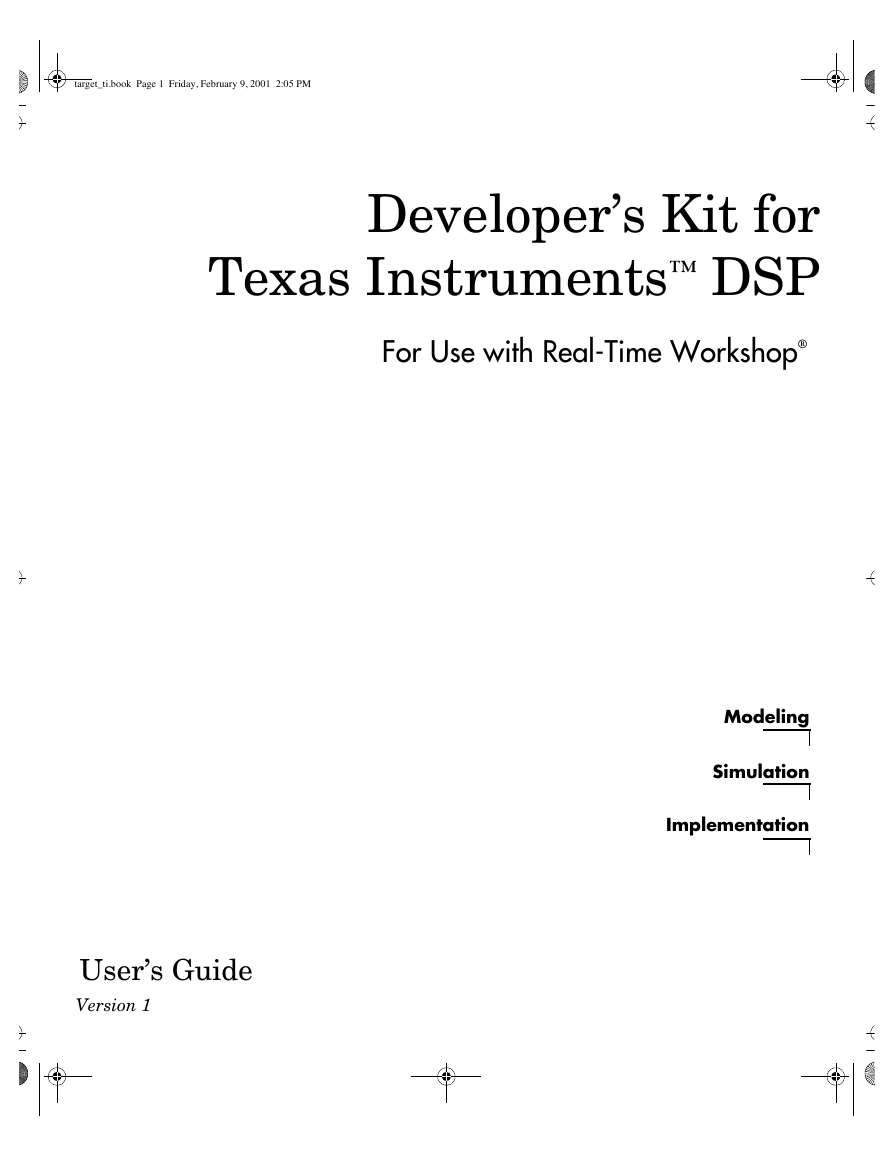
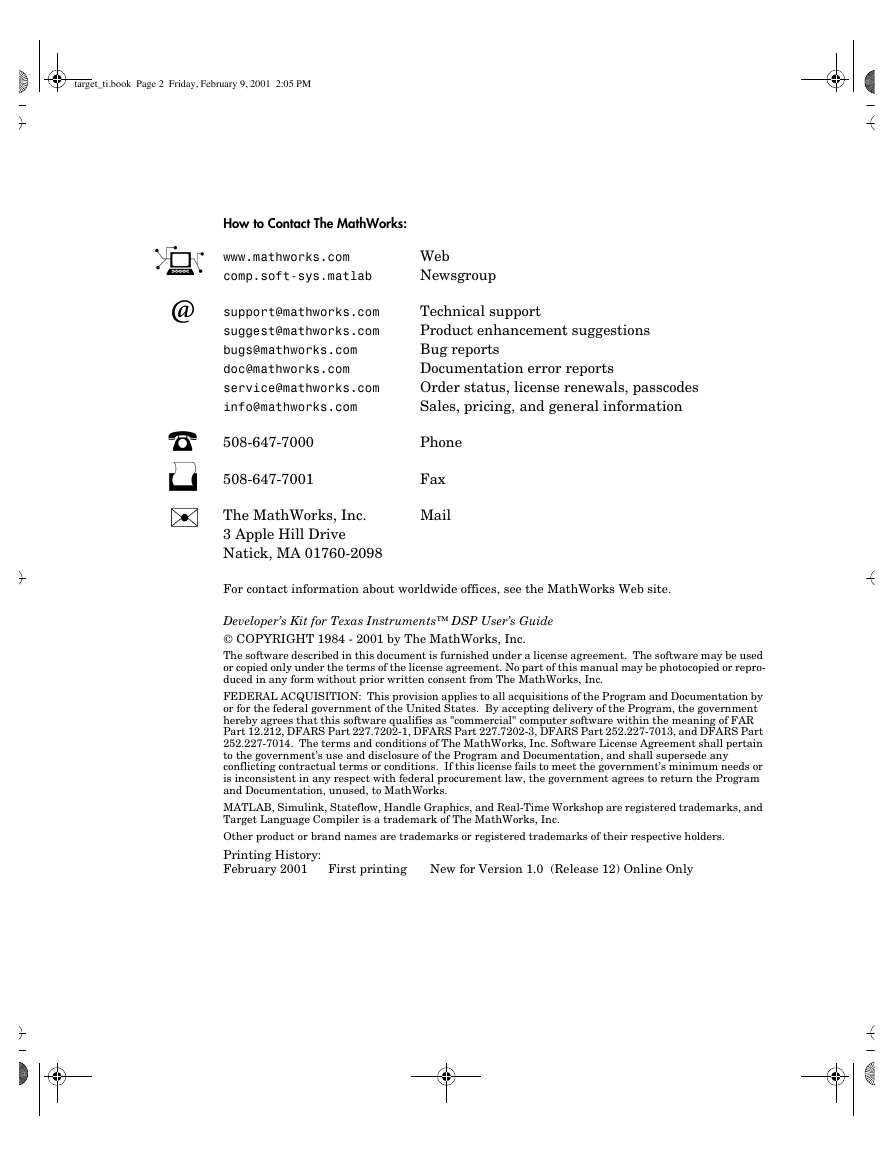
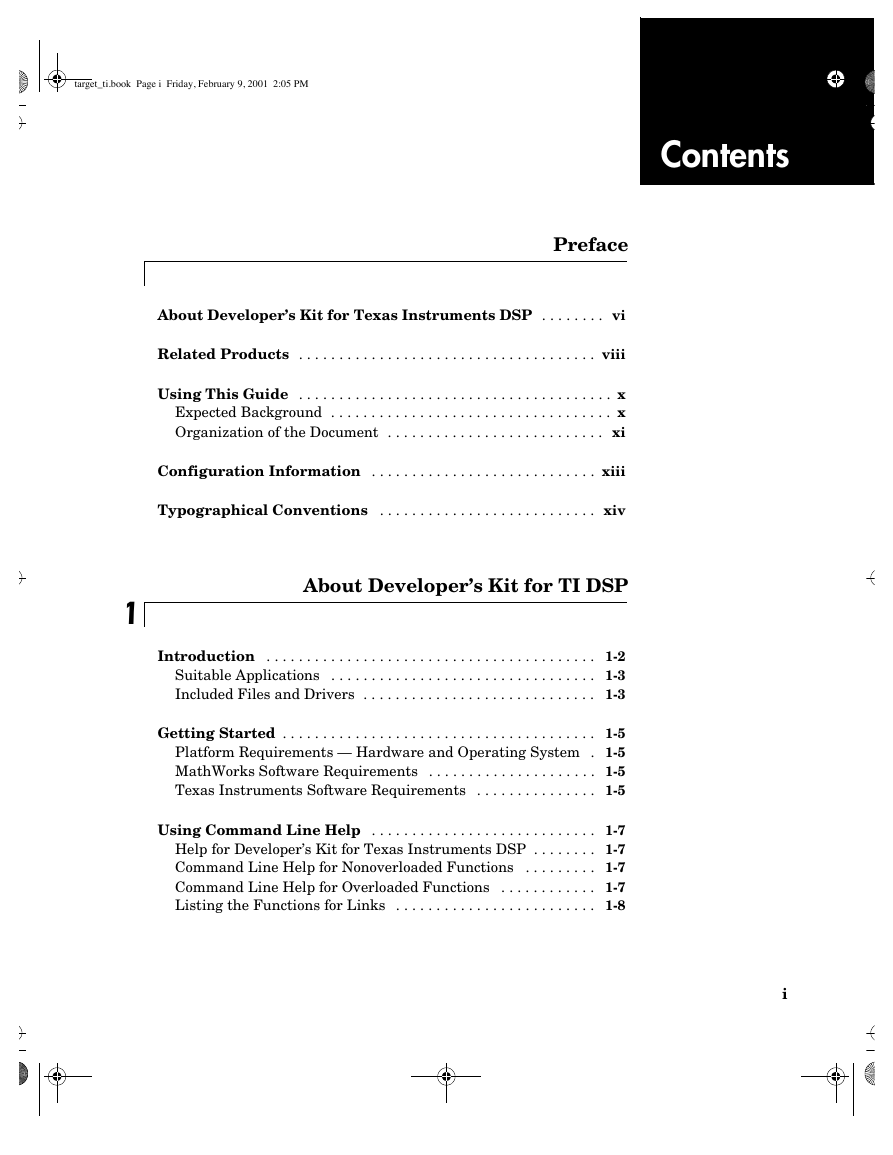
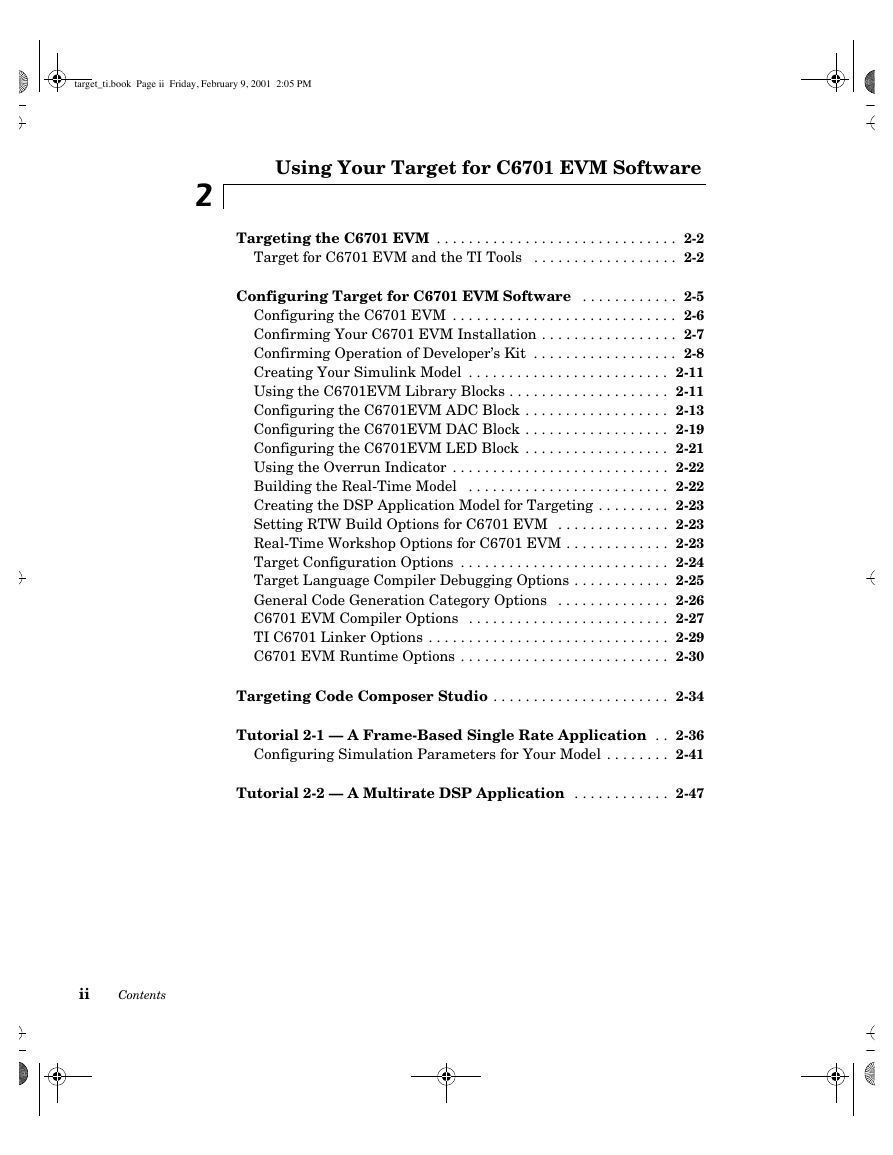


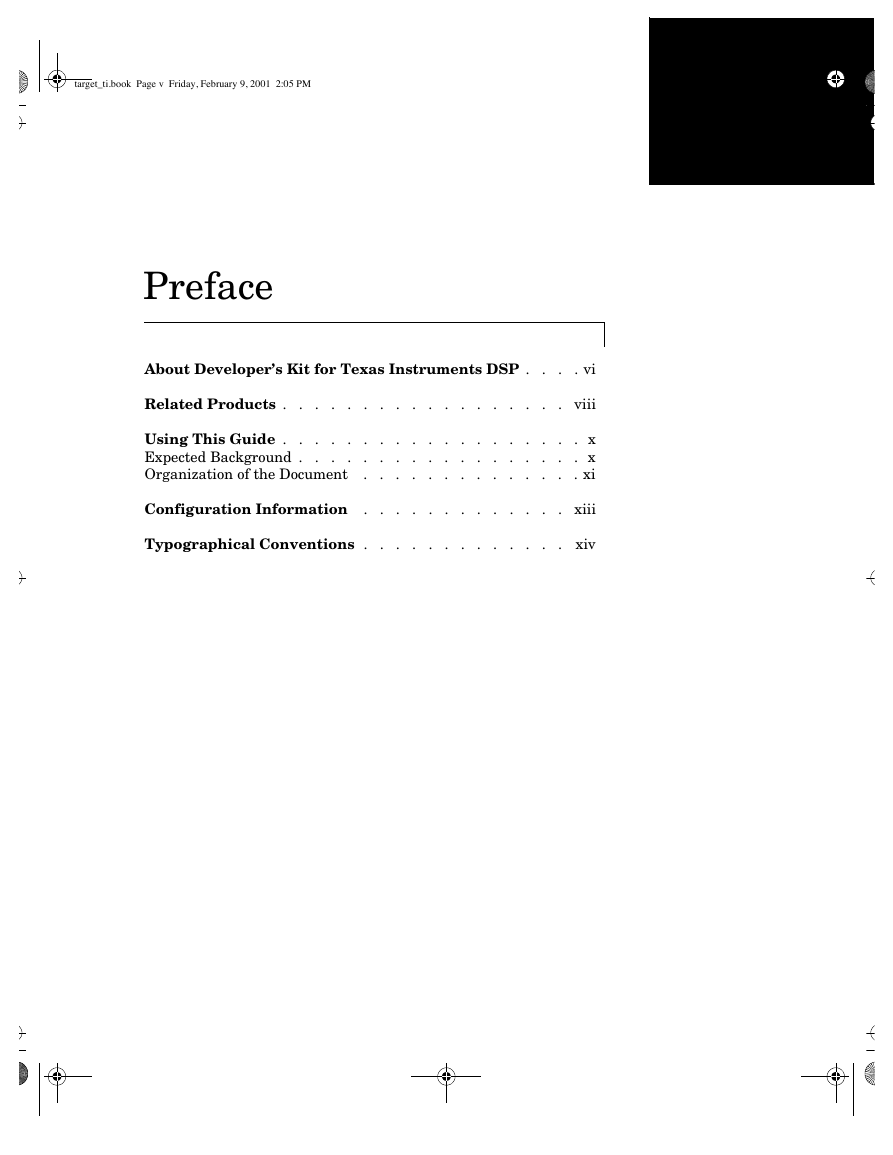
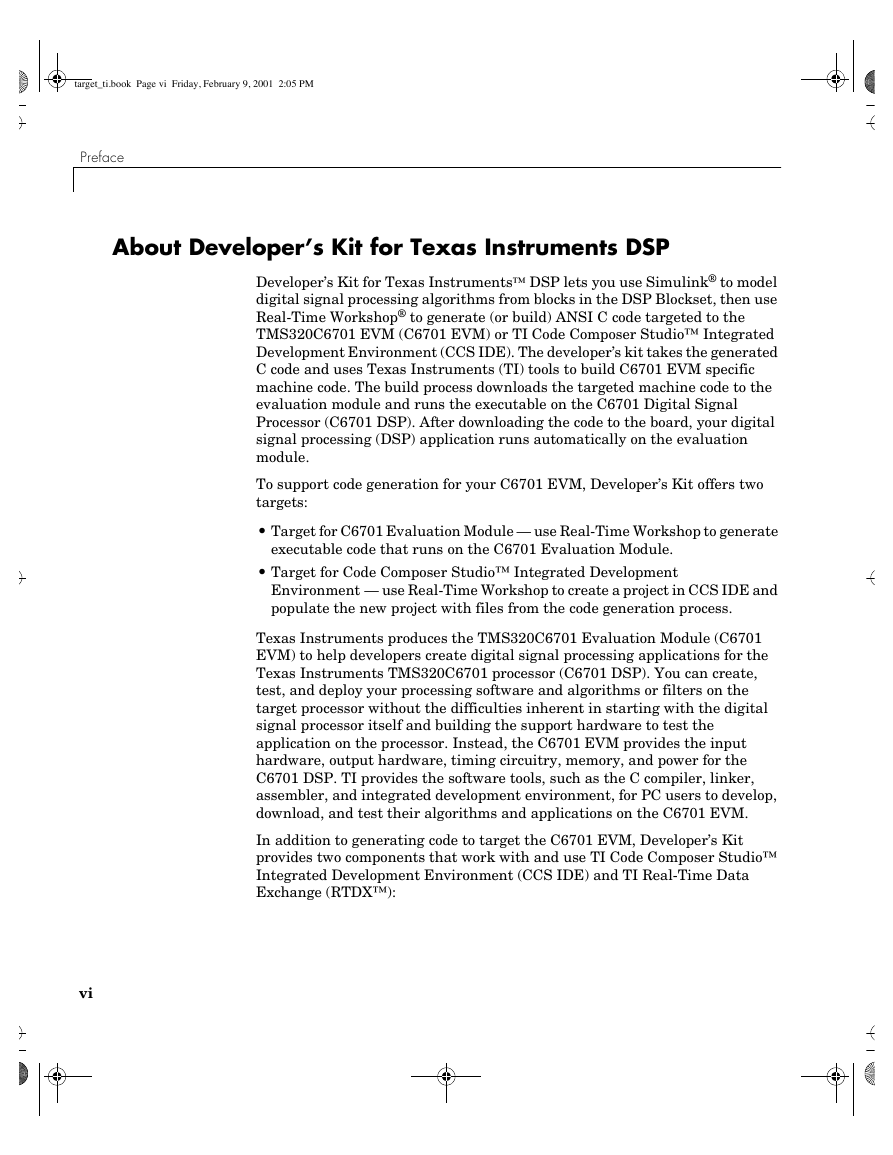








 2023年江西萍乡中考道德与法治真题及答案.doc
2023年江西萍乡中考道德与法治真题及答案.doc 2012年重庆南川中考生物真题及答案.doc
2012年重庆南川中考生物真题及答案.doc 2013年江西师范大学地理学综合及文艺理论基础考研真题.doc
2013年江西师范大学地理学综合及文艺理论基础考研真题.doc 2020年四川甘孜小升初语文真题及答案I卷.doc
2020年四川甘孜小升初语文真题及答案I卷.doc 2020年注册岩土工程师专业基础考试真题及答案.doc
2020年注册岩土工程师专业基础考试真题及答案.doc 2023-2024学年福建省厦门市九年级上学期数学月考试题及答案.doc
2023-2024学年福建省厦门市九年级上学期数学月考试题及答案.doc 2021-2022学年辽宁省沈阳市大东区九年级上学期语文期末试题及答案.doc
2021-2022学年辽宁省沈阳市大东区九年级上学期语文期末试题及答案.doc 2022-2023学年北京东城区初三第一学期物理期末试卷及答案.doc
2022-2023学年北京东城区初三第一学期物理期末试卷及答案.doc 2018上半年江西教师资格初中地理学科知识与教学能力真题及答案.doc
2018上半年江西教师资格初中地理学科知识与教学能力真题及答案.doc 2012年河北国家公务员申论考试真题及答案-省级.doc
2012年河北国家公务员申论考试真题及答案-省级.doc 2020-2021学年江苏省扬州市江都区邵樊片九年级上学期数学第一次质量检测试题及答案.doc
2020-2021学年江苏省扬州市江都区邵樊片九年级上学期数学第一次质量检测试题及答案.doc 2022下半年黑龙江教师资格证中学综合素质真题及答案.doc
2022下半年黑龙江教师资格证中学综合素质真题及答案.doc